Appearing in Japan in the 1950s, keema is a delicious Indian dish of ground meat, minced vegetables, and spices. Now adapted to local tastes and ingredients, Japanese-style Keema Curry is a one-pan recipe made quick and easy using Japanese curry roux.
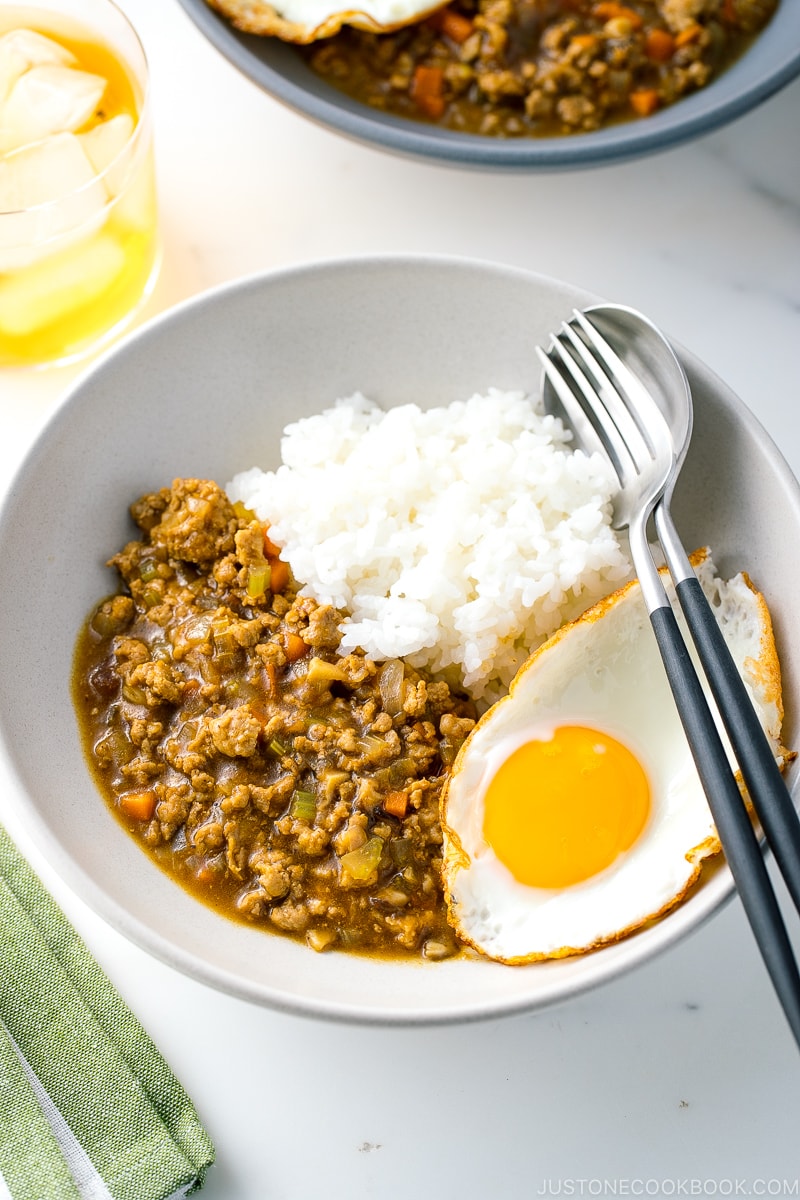
Keema Curry (キーマカレー) is a traditional Indian curry dish made of ground meat, minced vegetables, and spices. In Japan, we have been enjoying this flavorful curry since the 1950s.
Today I’ll show you how to make quick and easy Japanese-style Keema Curry at home. 30 minutes is all you need! You can also swap out the meat for vegetarian/ vegan options.
What makes it Japanese-style? The spices are toned down, and other umami seasonings and curry roux are incorporated to suit the Japanese palate. Anyone who prefers milder heat, you’re going to love this curry!
Keema Curry In Japan
The first Keema Curry appeared in 1957 at a curry and coffee shop, Ajanta in Asagaya, Japan (currently located in Kojimachi). Since then Keema Curry has become a regular menu at Indian restaurants all over Japan.
Because of religious reasons, mutton is generally used in keema curry in India, but it was, and still is, difficult to obtain meat in Japan. Therefore, restaurants have been serving the curry with chicken or pork.
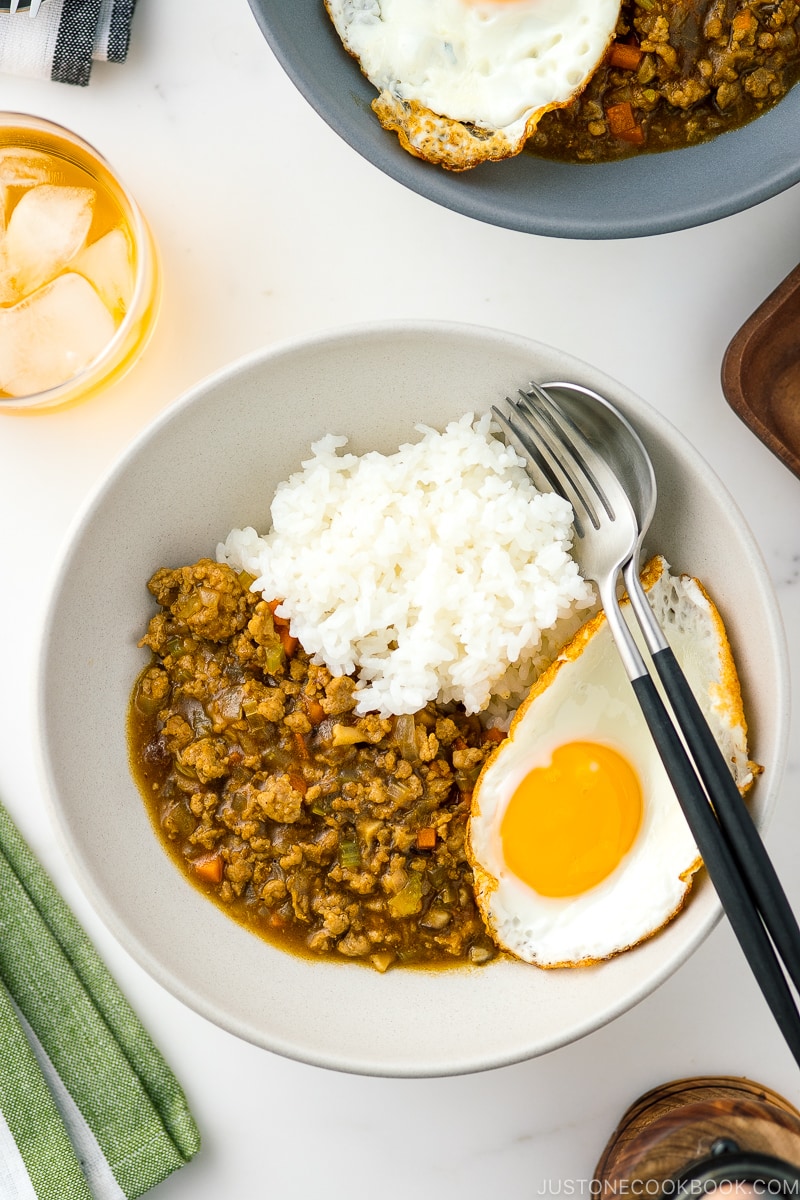
How to Make Japanese-Style Keema Curry
Keema Curry is also a popular dish among Japanese home cooks. Not only it tastes delicious, but it’s also a lot easier to make as compared to regular Japanese curry. The use of ground meat makes Keema Curry a breezy affair when you’re in a hurry. Here are the 3 simple steps:
- Chop vegetables into small pieces, similar to ground meat.
- Stir fry vegetables and meat first, add broth/water and curry powder, and simmer till the ingredients are tender.
- Add Japanese curry roux and simmer for a few minutes.
In India, Keema is usually served with basmati rice, paratha or roti, chapati, and naan, but Japanese-style Keema Curry is served with (short-grain) steamed rice. I like to serve it with a fried egg or halved boiled egg on top, which adds a nice creamy texture to the curry.
Difference Between Keema Curry and Dry Curry
If you’re familiar with Japanese “Dry Curry”, or ドライカレー, you may wonder about the differences between Keema Curry and Dry Curry. Both dishes look extremely similar but here are how they differ:
Keema Curry
- Originated in India
- Use ground meat (mutton, especially in Indian restaurants)
- Can be soupy (more broth)
Dry Curry
- Originated in Japan (it’s a home-style dish)
- Almost no soup or sauce
- Curry Fried Rice or Curry Pilaf is also considered Dry Curry variety.
Other Delicious Rice Recipes
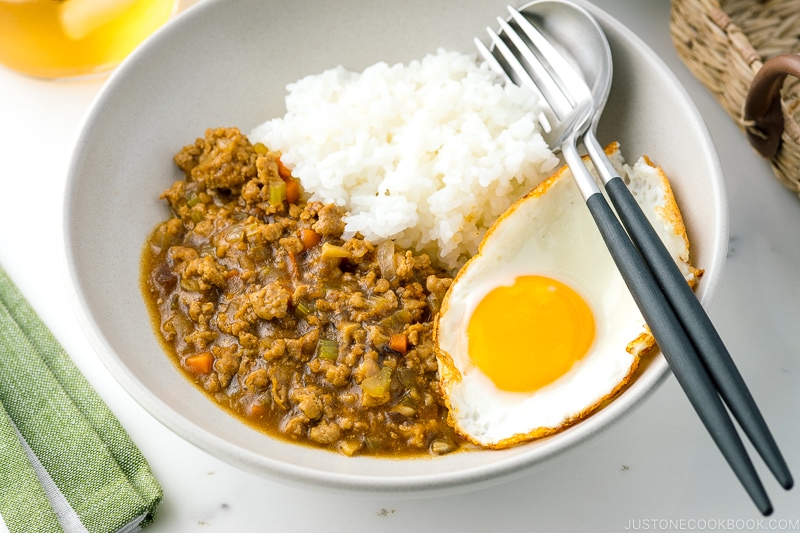
Wish to learn more about Japanese cooking? Sign up for our free newsletter to receive cooking tips & recipe updates! And stay in touch with me on Facebook, Pinterest, YouTube, and Instagram.
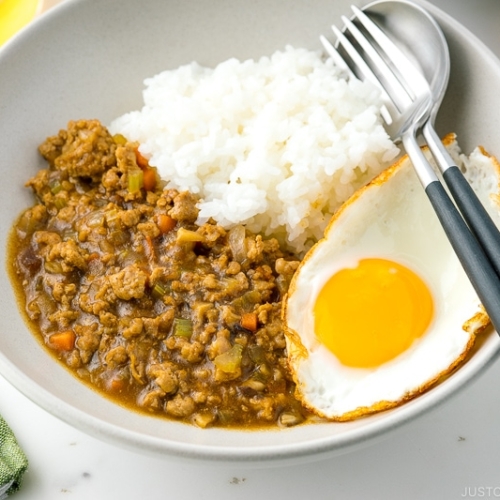
Keema Curry
Ingredients
- 1 onion (7 oz, 200 g)
- 1 rib celery (2 oz, 57 g)
- ½ carrot (3.5 oz, 100 g)
- 6 shiitake mushrooms (fresh; 1.7 oz, 48 g; to use dried shiitake, soak in 1 cup water for 15 minutes, squeeze out the liquid, and use the liquid in place of water in the recipe)
- 1 Tbsp neutral oil
- 1 lb ground pork (you can use ground beef or ground chicken; for vegan/vegetarian, use mushrooms, zucchini, eggplant, tofu, etc.)
- ¼ tsp Diamond Crystal kosher salt
- freshly ground black pepper
For the Seasonings
- 1 cup chicken stock/broth (use vegetable stock for vegetarian/vegan)
- ½ cup water (or more)
- 1 tsp Japanese curry powder
- 2 cubes Japanese curry roux (roughly 2 oz, 50 g; you can make homemade Japanese curry roux)
- 1 Tbsp unsalted butter
- 1 Tbsp ketchup
- 1 Tbsp tonkatsu sauce
For Serving
- 4 servings cooked Japanese short-grain rice
- 4 fried eggs (I always like to add, but optional)
Instructions
- Gather all the ingredients. We usually serve this dish with steamed Japanese short-grain rice. Cook the rice ahead of time; see how to make it with a rice cooker, pot over the stove, Instant Pot, or donabe.

To Cut the Vegetables
- Chop 1 onion finely. Cut the onion in half. Lay one half on the cutting board, flat side down. With the knife edge toward the root end, make ¼-inch horizontal slices to within ½ inch of the root end, keeping it intact. With the knife tip pointing toward the root end, make ¼-inch vertical slices.

- Finally, make perpendicular cuts down through the vertical slices you made. Repeat with the other onion half. If you need to chop the onions finer, run your knife through them using a rocking motion. Hold down the tip of the knife; otherwise, the onions will go flying around the room.

- Cut 1 rib celery into 4-inch pieces. Cut them into thin sticks, then mince them.

- Cut ½ carrot into 4-inch thin slabs. Cut the slabs into thin sticks, then mince them.

- Remove and discard the stems of 6 shiitake mushrooms. Slice the caps, then mince them.

To Cook the Keema Curry
- In a large skillet, heat 1 Tbsp neutral oil over medium heat. Add the onion and sauté until translucent.

- Add 1 lb ground pork and cook until no longer pink.

- Season with ¼ tsp Diamond Crystal kosher salt and freshly ground black pepper.

- Add the celery, carrots, and shiitake mushrooms. Mix well with the rest of the ingredients.

- Add 1 cup chicken stock/broth and ½ cup water. If needed, add more water so the cooking liquid covers the ingredients.

- Add 1 tsp Japanese curry powder and mix well. Cover and bring it to a boil. Skim off the scum and foam on the surface with a fine-mesh skimmer. Reduce the heat to medium low and cook, covered, until the vegetables are tender, about 6–8 minutes.

- Add 1 Tbsp unsalted butter and 2 cubes Japanese curry roux, one cube at a time. Dissolve it completely in the cooking liquid before adding the next cube. The curry will thicken as it heats up. Add more water or broth to adjust the thickness to your liking (you can make it soupy, if you prefer.)

- Add 1 Tbsp ketchup and 1 Tbsp tonkatsu sauce. Mix well and simmer for 3–5 minutes. If the sauce is too thick, add a small amount of water to loosen it.

To Serve
- Portion the steamed rice on individual serving plates and serve the Keema Curry on top. Add one of the 4 fried eggs (optional) to each plate.

To Store
- Keep in the airtight container for up to 2–3 days. This recipe freezes well, so make a large portion, divide it up, and freeze for up to a month.
To Reheat
- Curry thickens as it cools, so it tends to burn while reheating. To avoid this, stir in ¼ cup (60 ml) water or more to loosen up the sauce. Then, gently reheat it on low heat. If it seems thin, continue heating with the lid off to reduce the sauce.
Notes
Nutrition
Editor’s Note: The post was originally published on January 4, 2011. The new images are added and the post is updated and republished in August 2020.
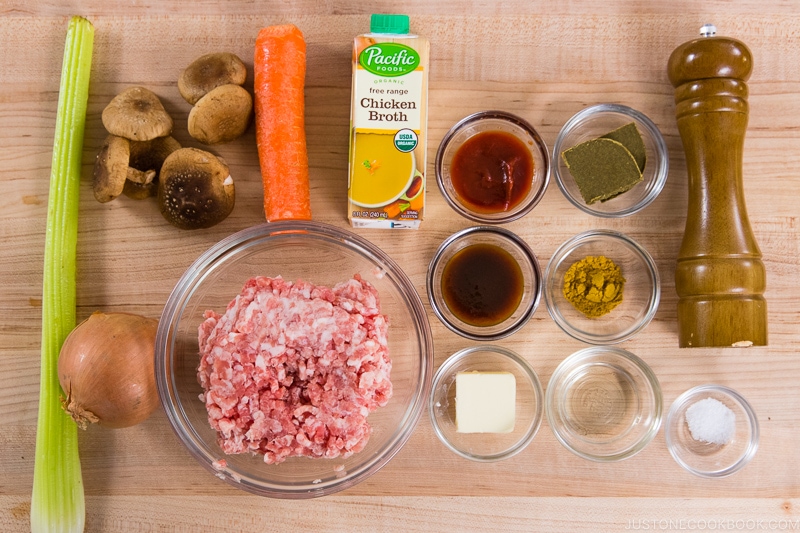
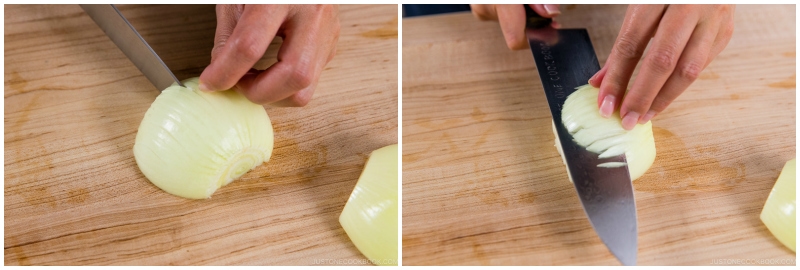
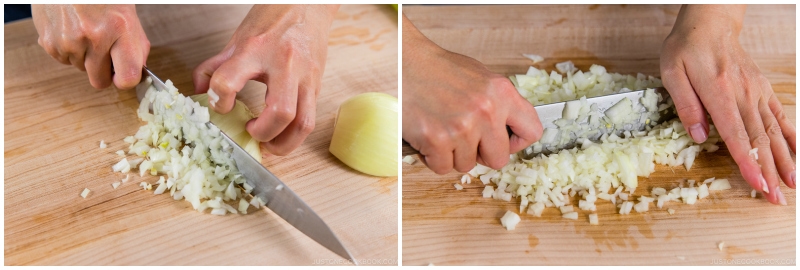
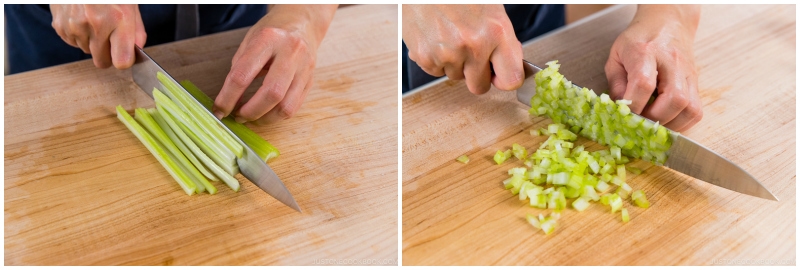
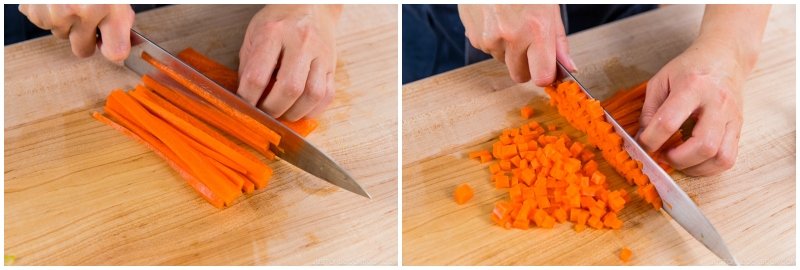
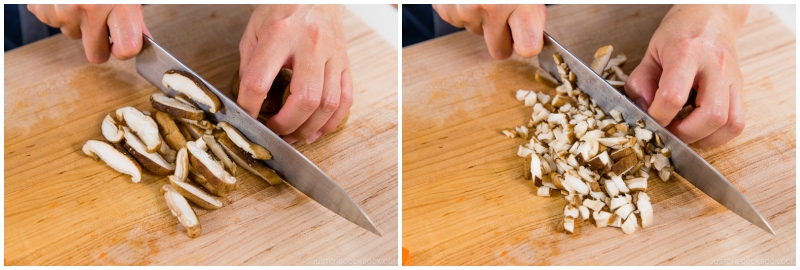
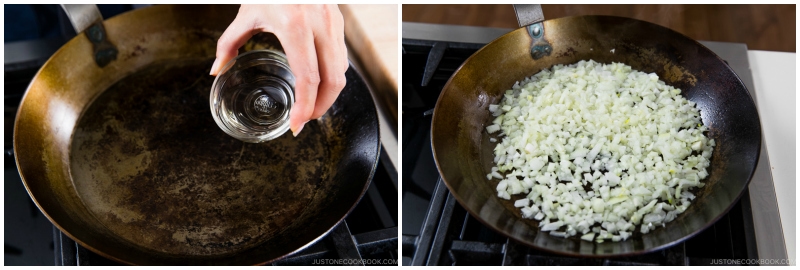
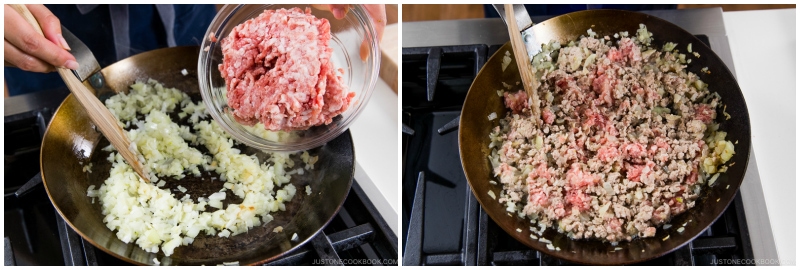
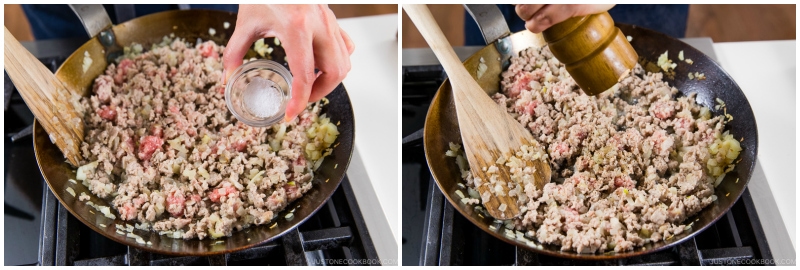
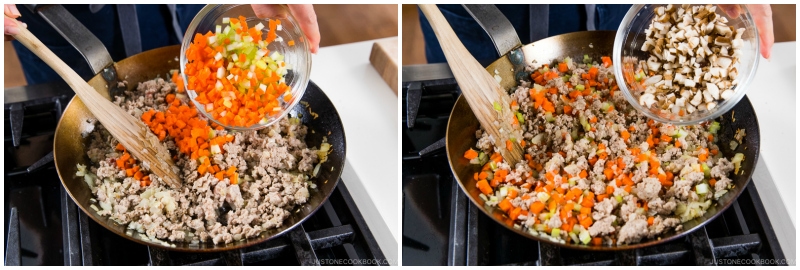
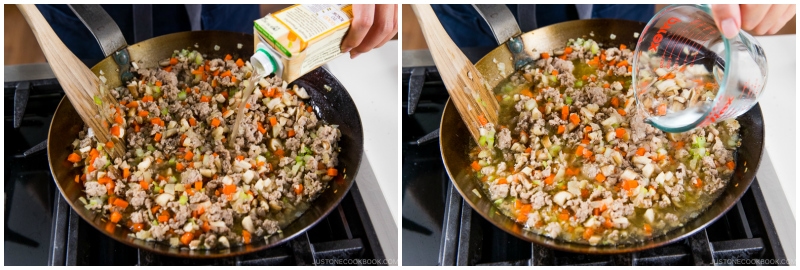
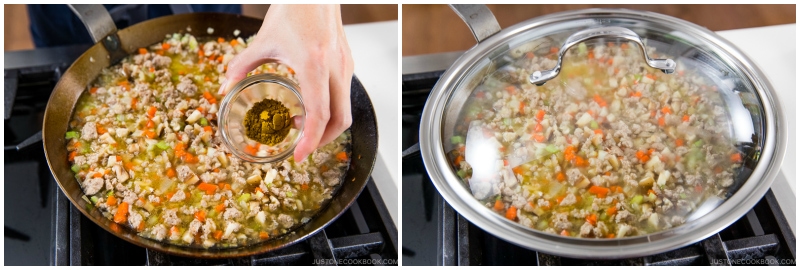
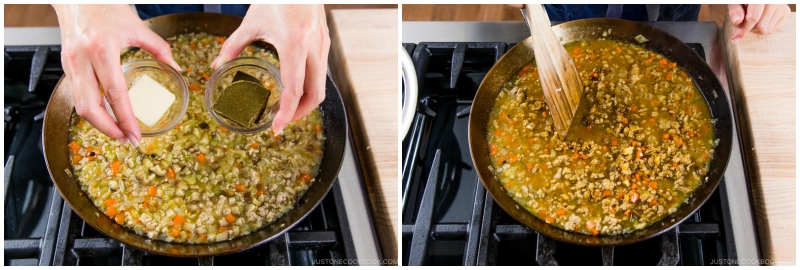
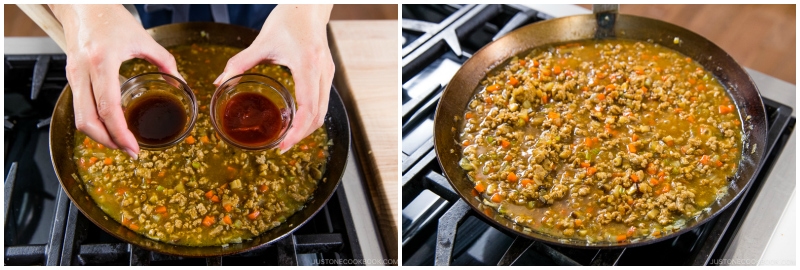
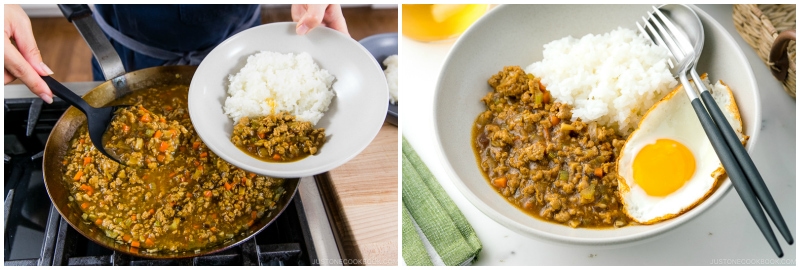

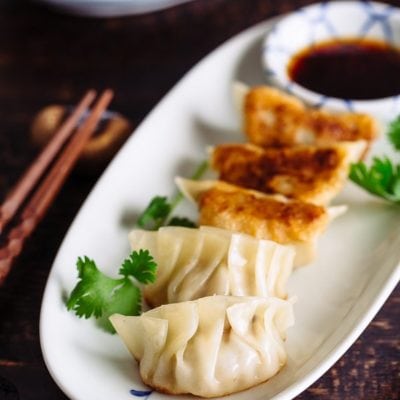
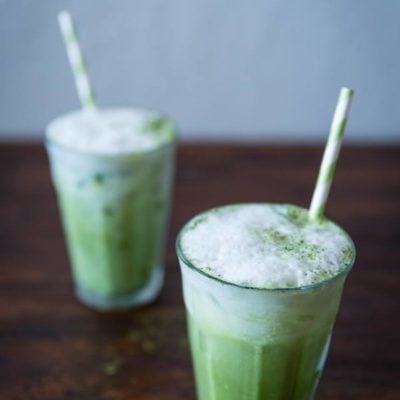

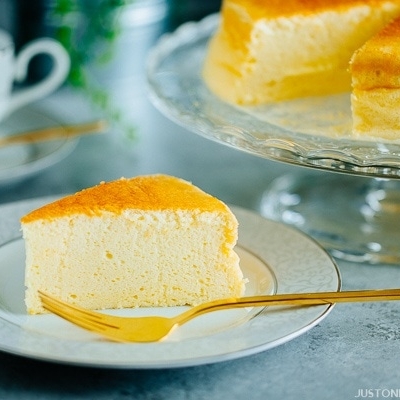
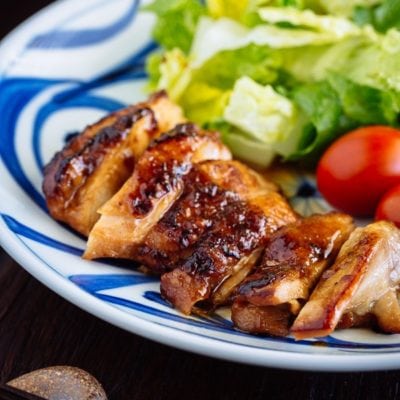
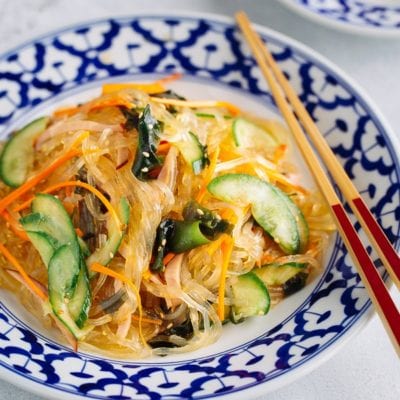
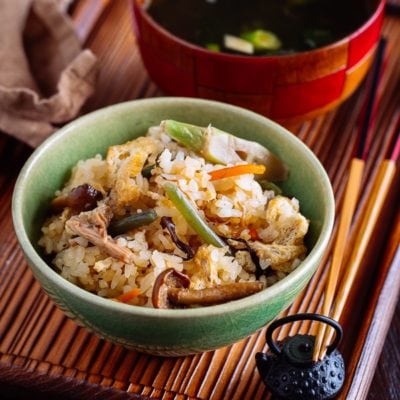
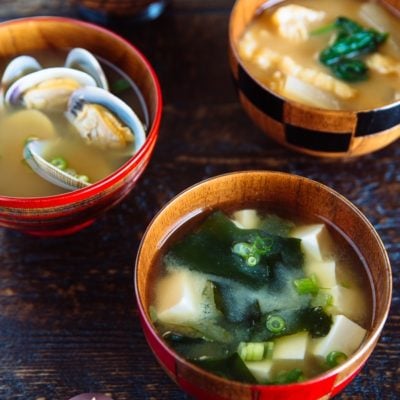
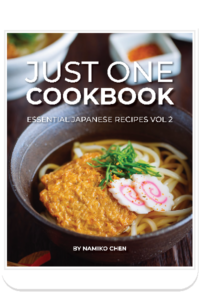
Hi, Barb here again. I make Keema often in the Indian style. Must give it a try in Japanese style too.
Thanks for the recipe.
Barb
Hi Barbara! Japanese style is similar to the Japanese curry style as we use the roux. 😀 Hope you enjoy the recipe!
Looks tasty. Sounds like a dry version of the curry would be a good filling for kare pan.
Yes, this would be a great filling for Kare Pan! YUM!!
I can’t wait to try it with the family. Your Japanese chicken curry with homemade curry rue (gluten-free) is currently in my ice box! The entire family loves it. We made it with yams this time.
Hi Aimee! Wonderful! Hope you enjoy this recipe. It’s my go-to recipe when I have to make dinner quickly. So fast and delicious! Happy to hear you are making homemade GF curry roux too! 🙂
I used to buy Keema Curry at Muji!!! I loved it 😂!
Hi Meghan! Ohh the packaged one? I’ve never tried that. Good to know it’s delicious! 🙂
Hi Nami,
Just had this for dinner even though it’s the middle of summer! I made the roux from scratch your way but added a bit too much liquid to the curry bc roux said good for 3 or 4 cups of liquid. That was my error but it was fine in the end. I just let it cook down. It’s definitely a stick-to-your-ribs dish with the egg! Would be so comforting in winter, but I had to try the roux after I got clarification from you. Delicious! Thank you. Wish we could get delivery from the local Japanese store to try more recipes!
Hi Carmen! Thank you so much for trying this recipe! I’m so glad you enjoyed it. You know, in Japan, we have a saying that when it’s hot you eat spicy food… so curry is especially popular during humid summer days!
Thanks for trying this dish with homemade curry roux. Don’t use all the roux next time. Since this recipe requires a bit of roux (not the entire box), you really need like 2 tablespoons (ish) worth of homemade curry roux recipe for this dish (because we do not require 3-4 cups water in this recipe). Thank you again!
This was a smash hit! My housemates loved it and so did I because it only took 30 minutes to make. My housemate has been surprised because almost all of what I cook is Asian cuisine and has egg in/with it and she says she has never had it with dinner – but she likes it. I’ve also been cooking a lot of curry flavoured dishes recently and I’m just happy they haven’t got bored of it! Haha.
As always, thanks Nami!
御馳走様でした!
Hi Julia! I’m so so happy you liked this recipe! It’s actually one of my favorite quick menus that I often make at home. Thanks for trying this and for your kind feedback!!
Nice and easy recipe! Flavors can very a lot with different roux/Tonkatsu sauce but it’s always good. Been making it for years now (*´꒳`*)
Hi Albert! Indeed! It’s my go-to recipe when I’m too busy. 🙂 Thank you so much for trying this recipe for so many years! xoxo
[…] 15. Keema Curry […]
[…] Keema Curry […]
Thank you for the recipe. Wow, it was really delicious. I used ground beef without the celery and it still turned out delicious. It tasted like it was from the restaurant.
Hi Yvonne! I’m so happy you liked this recipe. It’s one of my go to recipes! Thank you for your kind feedback!
Hi Nami! Do you think i could substitute lean ground turkey for ground pork? I loved Keema Curry when I was in Japan. Would like to try making it but hopefully make a healthier version.
Hi Carmela! Yes, you can do that. 🙂 I hoe you enjoy this recipe!
Nami,
Your Keema Curry recipe is delicious! I made it for dinner tonight and we loved it! We agreed that it was definitely on our “make again” list. Thank you for publishing so many great recipes. We are enjoying making our way through them.
Hi Gayle! Aww I’m so happy to hear that. Thank you for your kind feedback on this post. It’s fast and easy to make this dish, so it’s definitely our favorite frequent meal. 😀
Hi Nami,
I stumbled upon this easy curry recipe earlier this week when I was out of ideas on what to cook and i’ve already made it twice this week because it’s so good! I added more veggies (1-2 eggplant sauteed separately) and it still tasted good. Thank you for sharing!!
Hi Stella! I’m sooo happy to hear that you enjoyed this recipe. It’s easy too, which is why I make it often myself. 😀 Thanks so much for your kind feedback, Stella!
My whole family loved this recipe. In fact, my very picky kids will eat most of the recipes that I cook from you blog!
Hi Renee! I’m so happy to hear that! My kids love this too, and my son who normally eats very slow inhale this dish every time I cook. 😀 I’m glad your children enjoy my recipes. Thank you for your kind feedback! xo
I eat Japanese curry at least once a week, and this is by far the best curry recipe I have ever tried. Thanks for offering your culinary expertise!
Hi Wendell! So happy you liked this. This is one of my go to meal too, and I cook pretty often when I’m busy. However, I haven’t had a chance to update my photo… it doesn’t look so tasty with the yellow dining room light! xD Hope I can re-take pictures soon. Thanks for trusting my recipe (besides bad picture) and making it. You made my day!
Hi Nami, I just wanted to say thank you so much for sharing your incredible archive of tasty recipes and lovely stories about your family and experiences! I had been really intimidated to try cooking Japanese cuisicuisines then I came across your site and got inspired (and reassured). We actually felt confident enough to explore the local Marukai Marketplace, and came home and tried several of your recipes–the Curry Udon was an especial favorite, and just tried this recipe tonight (very tasty). The only issue I’ve run into is that I’m pretty averse to most seafood, and the combo of the fishy+seaweedy smell of the dashi, in particular, makes my tummy roil ;(. Is there a particular brand of dashi concentrate you might suggest that wouldn’t smell so strong? I feel like even with vegan/Kombu dashi that sea-smell would be present. Thanks!
Hi Tara! Thank you so much for your kind compliment! I’m so happy to hear you enjoyed my recipes.
About the dashi question you have, it’s hard to remove the fishy or sweed smell as it’s the main ingredient. You can dilute more, if you like.
Or there is actually another “dashi” that we use. I haven’t shared a specific recipe yet on my blog, but we use dried shiitake mushroom as a part of dashi (like how I used here). You can either increase that amount to add more “umami” in the food.
However, if you do not like the flavor, you can completely omit. I wouldn’t substitute with chicken/beef/vegetable stock though. They don’t really go well with Japanese traditional flavor (some works).
Hope I answered to your questions. Let me know if I can help you further! 🙂